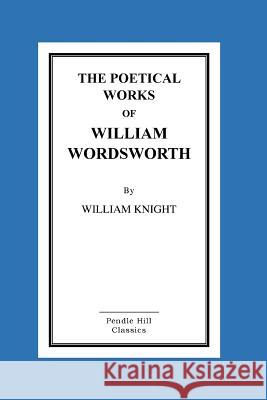The Poetical Works Of William Wordsworth » książka
The Poetical Works Of William Wordsworth
ISBN-13: 9781516872763 / Angielski / Miękka / 2015 / 482 str.
The only poems belonging to the years 1821-2 were the "Ecclesiastical Sonnets," originally called "Ecclesiastical Sketches." These were written at intervals, from 1821 onwards, but the great majority belong to 1821. They were first published in 1822, in three parts; 102 Sonnets in all. Ten were added in the edition of 1827, several others in the years 1835 and 1836, and fourteen in 1845, -the final edition of 1850 containing 132. After Wordsworth's return from the Continent in 1820, he visited the Beaumonts at Coleorton, and as Sir George was then about to build a new Church on his property, conversation turned frequently to ecclesiastical topics, and gave rise to the idea of embodying the History of the Church of England in a series of "Ecclesiastical Sketches" in verse. The Sonnets Nos. XXXIX., XL., and XLI., in the third series, entitled, Church to be erected, and New Churchyard, are probably those to which Wordsworth refers as written first, in memory of his morning walk with Sir George Beaumont to fix the site of the Church: but it was the discussions which were being carried on in the British Parliament and elsewhere, in 1821, on the subject of Catholic Disabilities, that led him to enlarge his idea, and project a series of Sonnets dealing with the whole course of the Ecclesiastical History of his country. His brother Christopher-while Dean and Rector of Bocking, and domestic chaplain to the Archbishop of Canterbury-had published, in 1809, six volumes of Ecclesiastical Biography; or, the Lives of Eminent Men connected with the History of Religion in England. Southey's Book of the Church, -to which Wordsworth refers in the Fenwick note prefixed to his Sonnets-was not published till 1823; and Wordsworth says, in a note to the edition of 1822, that his own work was far advanced before he was aware that Southey had taken up the subject. As several of the Sonnets, however, are well 12 illustrated by passages in Southey's book, I have given a number of extracts from the latter work in the editorial notes. Southey, writing to C. H. Townshend, on 6th May 1821, says: "Wordsworth was with me lately. His thoughts and mine have for some time unconsciously been travelling in the same direction; for while I have been sketching a brief history of the English Church, and the systems which it has subdued or struggled with, he has been pursuing precisely the same subject in a series of sonnets, to which my volume will serve for a commentary, as completely as if it had been written with that intent." (See Life and Correspondence of R. Southey, vol. v. p. 65.) Wordsworth's own notes appended to the Sonnets, and others which are added, will show his indebtedness to such writers as Bede, Strype, Foxe, Walton, Whitaker, and Sharon Turner. The subjects of the sonnets on the "Aspects of Christianity in America" were suggested to him by Bishop Doane and Professor Henry Reed; and others in the series, dealing with offices of the English Liturgy, were also suggested by Mr. Reed.-ED.
Zawartość książki może nie spełniać oczekiwań – reklamacje nie obejmują treści, która mogła nie być redakcyjnie ani merytorycznie opracowana.











